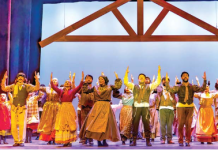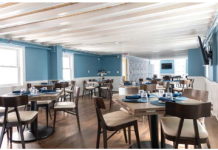By Charles B. Rubinstein
“What’s in a name? That which we call a rose
By any other name would smell as sweet.”
– William Shakespeare, Romeo and Juliet
Until fairly recently, Old World labels usually carried the name of the place where the wine came from and New World labels prominently displayed the name of the grape instead.
Most wine lovers rarely give more than a passing thought to the origin and history of the name on the label, and in some cases their judgment of the meaning is incorrect. Sometimes the winery does its own research on the name as it did in one instance at St. Supéry.
St. Supéry is one of the top 10 wineries in the Napa Valley both in production and number of visitors, but little was known at the winery about their patron saint. With the help of friends and staff they managed to track the information down. One would think that the background information was known by the Skalli family who owned the winery, but apparently that was not the case. The research by the staff and friends found that St. Supéry, or Saint Superius as he was originally known was mentioned in Martyrologium Romanum as the faithful servant of the better-known Saint Salvius. Unfortunately by the time that this fact was uncovered, Saint Superius was dropped from the latest edition of the Martyrologium.
The origin of the name Far Niente, a highly rated winery in the Napa Valley, is nowhere near as unknown as the background of the patron saint. Far Niente was the name of the Oakville estate that served as the country ranch and farm of San Franciscan John Benson, a real estate and mining entrepreneur. Benson purchased the property in the mid-1800s, and he constructed a winery towards the end of that century. His winery was in operation from 1885 to 1919 when it fell into disuse with the onset of Prohibition. The winery lay abandoned until its purchase by Gil Nickel in 1979. During the restoration the original name, which had been carved in stone on the winery building, was uncovered and remains to this day. Loosely translated the name Far Niente means “without a care” in Italian. Dolce, a famous desert wine created in 1985 by the partners of Far Niente, caries the motif further in that “dolce far niente” literally means “sweet doing nothing” in Italian.
Bordeaux has many châteaux whose names have an interesting history. Château Beychevelle, a fourth growth in the Bordeaux Classification of 1855, has a famous legend surrounding the origin of its name. The story is based on the French words bêche velle, which in Gascon is baisse voile, meaning lower sails. Ships passing the nearby Gironde estuary supposedly lowered their sails as a salute to Duc d’Eperon, the former owner of the Château who was awarded the rank of senior admiral of France in 1587. Unfortunately, the legend is only partly right. The ships might have lowered their sails, but it is doubtful if it was for the Duc because he probably never lived at the Château. The lowering of the sails, if true, was most likely to stop and pay taxes to the Bordeaux authorities or to let customs officials aboard to inspect the cargo. A recent suggestion is that the name simply means sailing boat derived from the Gascon words beychet (a boat) and velo (a sail).
The wines of Château Ducru-Beaucaillou, a second growth, have always been one of my favorites. Beaucaillou means pretty pebbles in keeping with the pebbles found in the soil of the vineyard. However, originally the vineyard was called Maucaillou from mauvais (bad) because the pebbles made it difficult to work the vineyard. That complaint changed when the wines showed how good they were.
Many wine lovers seem to think that the name Mouton in Château Mouton Rothschild, a first growth, refers to sheep. There was a nearby plateau where sheep used to graze, but that relation is tenuous. The other evidence linking Mouton to sheep is the emblem of Château Mouton Rothschild, which contains Rams Rampant. The opinion most favored today, and the one that was offered to me on a visit to the Château, is that the name is derived from motte (de terre) or mound which was later corrupted to mothon and subsequently to mouton.
Next time you look at a wine label, think about the name and what its origin might be. A little research can be fun.
If you have questions or comments about wine write to me at The Two River Times™ or email me at trtwineman@aol.com.
Pick of the Bunch
Highly Recommended
2011 Dr. Loosen Wehlener Sonnenuhr Riesling Spätlese, Mosel ($32)
2010 Château Beychevelle, Saint Julien ($99)
2009 Far Niente, Oakville ($110)
Recommended
2010 Chateau Ste. Michelle Pinot Gris, Columbia Valley ($13)
12 St. Supéry Estate Sauvignon Blanc, Napa Valley ($20)
2011 Cloudy Bay, Marlborough ($24)














